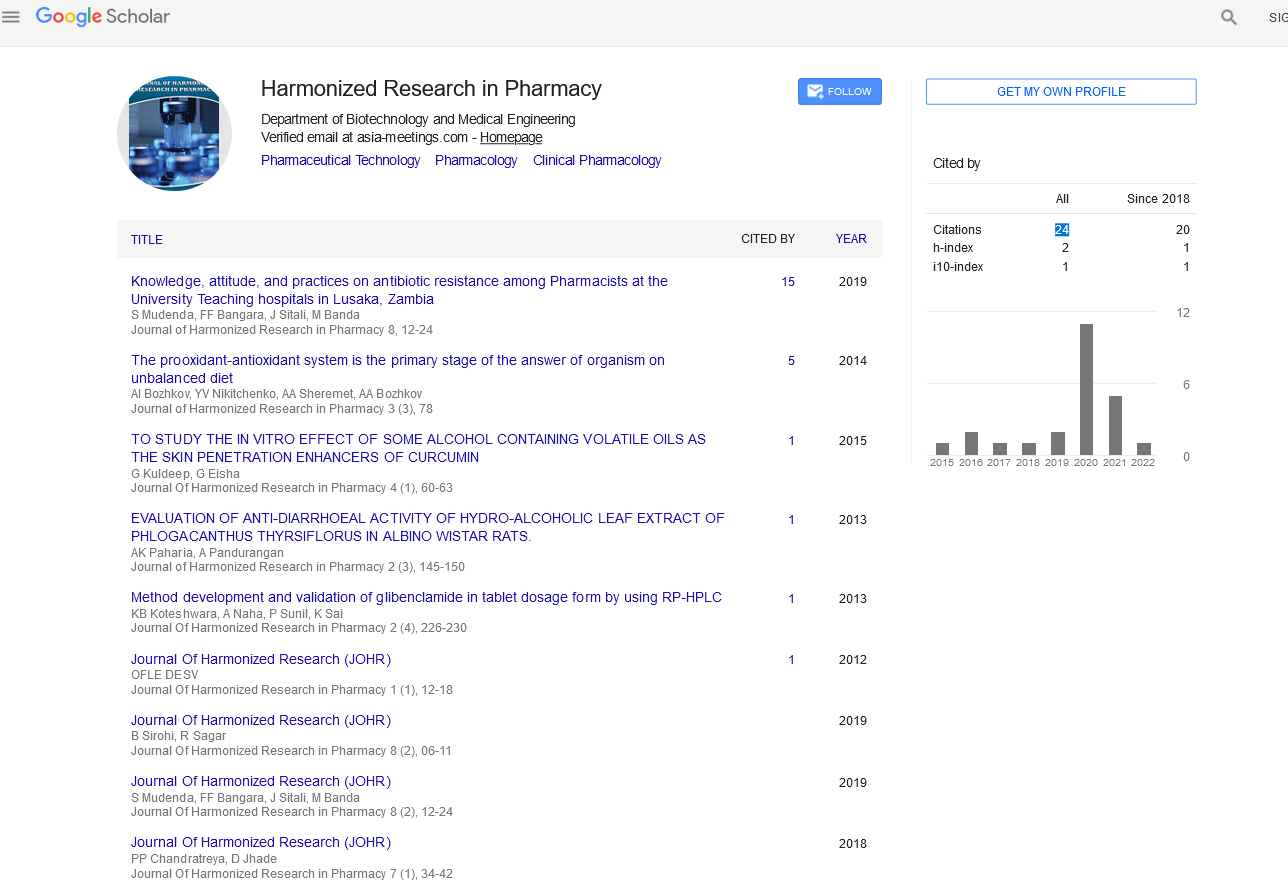Commentary - (2022) Volume 11, Issue 4
NETWORK PHARMACOLOGY-BASED STUDY ON THE ANTI-PNEUMONIA MECHANISMS OF HONEYSUCKLE
Iughetti Ferrara*Received: Nov 28, 2022, Manuscript No. JHRP-22-84140 ; Editor assigned: Dec 02, 2022, Pre QC No. JHRP-22-84140 (PQ); Reviewed: Dec 16, 2022, QC No. JHRP-22-84140 ; Revised: Dec 23, 2022, Manuscript No. JHRP-22-84140 (R); Published: Dec 30, 2022, DOI: 10.30876/2321-0958.22.11.191
About the Study
Inflammation of the lung parenchyma, including the terminal airways, alveolar spaces, and interstitial lung, brought on by a variety of pathogens, including bacteria, viruses, fungi, parasites, etc. is referred to as pneumonia. Pneumonia is split into two categories: Community Acquired Pneumonia (CAP) and Hospital Acquired Pneumonia (HAP). Adult CAP incidence in European and North American nations is 511/(1000 person-years), and patient age and illness severity are strongly correlated with mortality rates. Pneumonia has been noted as one of the top causes of death in Chinese adults and children in literary works. Clinical presentations in infants and the elderly are unusual, frequently with vague symptoms and a sneaky beginning, with numerous complications and a dismal prognosis.
Routine clinical guidelines advise anti-infective treatment based on empirical anti-infective and laboratory evidence, including antibiotics and antiviral medications, at the start or at the beginning of the visit, for the treatment of community acquired pneumonia. When evidence is in favour, hormone-assisted treatment is administered for severe cases. Such as the misuse of antibiotics, microbial infection resistance, hormonal side effects, and so forth. According to a study, experimental mice were subjected to neurological alterations and even death when antibiotics like amoxicillin were misused. Finding medications that are clinically effective as candidates for the treatment of pneumonia is therefore of utmost importance.
Traditional Chinese herbal treatment uses honeysuckle. The principle of traditional Chinese medicine states that its decoction can treat feverish respiratory illnesses. Experimental research has proven that honeysuckle contains a protective cytokine that facilitates the discharge of pneumonia brought on by LPS. As a result, however the precise processes by which honeysuckle inhibits pneumonial inflammation are still unknown. The aim of this network pharmacology study is to investigate the probable processes of honeysuckle in the treatment of pneumonia, as well as to identify the active substances and their target genes.
A wide range of plants employ the component chlorogenic acid as a standard for the identification of honeysuckle in the Chinese Pharmacopoeia. Studies have shown that chlorogenic acid has some anti-inflammatory properties, including the removal of TNF, IL6, and other inflammatory mediators in peripheral blood, which may be related to the elimination of reactive oxygen species. An improved antioxidant and anti-apoptotic impact in vitro and improved neurological recovery in vivo are two benefits of the iridoid glycoside class known as morroniside. It can lower the expression of IL-6, IL-1, and TNF- in the myocardium of rats having myocardial infarction, according to animal research. A naturally occurring chemical called linalool can be found in fruits and aromatic plants. It has a certain anti-inflammatory action, protecting against ovalbumin-induced airway inflammation and excessive mucus secretion, for example. Downregulation of inflammatory mediators and MAPK/NF-B signalling has a direct impact on the outcome.
Because it inhibits the release of inflammatory chemicals in vivo, the synthetic corticosteroid dexamethasone has been utilised for a long time in the treatment of severe pneumonia and pneumonia complications. Corticosteroid therapy can lower the mortality and morbidity of individuals with severe CAP and the incidence of non-severe CAP in both adults and children, according to a study involving more than 2,200 participants. However, it is linked to greater adverse effects, especially hyperglycemia concurrently. Inappropriate use of glucocorticoids has been linked to hyperglycemia, pneumonia, urinary tract infections, gastrointestinal ulcers, and increased mortality, according to studies. Dexamethasone’s pharmacological study mechanism is still unknown at this time.

Google Scholar citation report
Citations : 147
Journal of Harmonized Research in Pharmacy received 147 citations as per google scholar report









